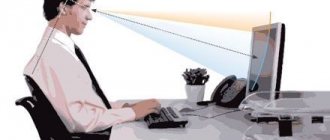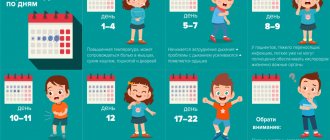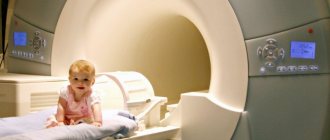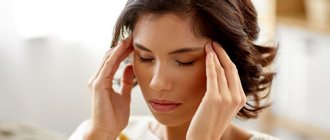Headaches are one of the most common complaints with which patients consult a doctor. Almost 90 percent of people experience headaches every year, and almost everyone will experience at least one episode of headache at some point in their life.
Most people experience primary headaches, which are usually mild in intensity but can be severe enough to affect mood and quality of life. Unlike secondary headaches, which are caused by pathological processes or trauma, and they are usually more intense, and may be accompanied by various neurological symptoms, primary headaches are not the result of any disease.
Types of headaches
At least 14 types of headaches are currently classified, but there are several main types of primary headaches:
- Tension headache : The most common type of primary headache, more recently called tension headache. Tension headaches can be episodic or chronic. And this type of headache may occur in up to 40% of patients.
- Cervicogenic headache : A less common but also very common type of primary headache is cervicogenic headache. Although studies have reported varying incidences of this type of headache, this type of headache still occurs in 16-36% of headache patients.
- Migraine : There are two different types of migraine: with aura and without aura. People who suffer from migraines with aura experience visual disturbances as a precursor to the attack, such as blurred vision or tunnel vision, or seeing zigzag lines or stars. In contrast, migraines without aura, which are more common, accounting for 8 to 16 percent of the headache population, are characterized by the absence of any visual, sensory or speech disturbances.
A person can have several types of headaches at the same time, either simultaneously or at different times. For example, working at a computer for long periods of time can cause tension headaches, and drinking alcohol later after celebrating the completion of a project can trigger a migraine attack.
According to the International Headache Society, each type of primary headache has specific characteristics.
Tension type headache
- A. Having at least 10 episodes occurring within a month and at least within three months.
- B.Headache lasting from 30 minutes to 7 days
- C. Headache has at least two of the following symptoms:
- Two-way localization
- Tightening sensation (non-pulsating)
- Low to moderate intensity
- Does not worsen after normal physical activity such as walking or climbing stairs
- D. Both of the following are present:
- No nausea or vomiting, but anorexia may occur
- No more than one of the following: photophobia or phonophobia (sensitivity to noise)
- E. No connection with other diseases (for example, diseases of the vascular and nervous system)
Cervicogenic headache
- A. Pain is localized in the neck and occipital region and can radiate to the forehead, orbital region, temples or ears.
- B. The pain is moderate and not throbbing; as a rule, it begins from the neck, can have varying duration, and is permanent.
- C. Signs and symptoms of neck involvement include:
- Provocation of pain by incorrect movements of the neck or being in an uncomfortable position for a long time or the presence of external pressure on the neck or occipital region.
- Ipsilateral neck pain
- Decreased neck range of motion
- D.Other characteristics:
- Sometimes a history of trauma
- Female
- Significant effect from taking indomethacin (NSAID) or ergotamine
Migraine (without aura)
- A. At least headaches meet criteria B-D
- B. Duration of headache attacks from 4 to 72 hours
- C. Headache has at least two of the following symptoms:
- One-sided nature
- Pulsating Plan
- Moderate to severe intensity
- Worsened by normal physical activity (walking up stairs)
- D. During a headache, at least the following symptoms are present:
- Nausea and/or vomiting
- Photophobia and phonophobia
- E. Other causes of headache have been excluded
It's time to get a grip!
And now about what you should do to cope with the attack yourself.
1. The easiest way is to do nothing, but just lie down, close your eyes and relax in complete silence, wait 10-15 minutes until it goes away on its own. In most cases, the method works. 2. Massage the head with light stroking movements from the forehead to the back of the head. Next, walk from the crown down to the ears and from the crown to the back of the head, smoothly going down to the neck. You also need to remember to massage your neck. 3. Ventilate the room well or, if time and weather permit, go for a walk in the fresh air. 4. Darken the room and humidify the air using devices or simply by hanging wet rags on the radiator. 5. Take a warm (but not hot) bath, adding a few drops of essential oils to the water: lavender, lemon, peppermint, marjoram. Fragrant foam and sea salt are welcome! Or standing in a hot shower will help relieve cramping headaches caused by muscle spasms in the back of the neck and head. You can take mustard foot baths - they reduce blood pressure in the brain. 6. Apply cold compresses - they constrict the blood vessels in the painful area and reduce painful pulsation. A bag of ice cubes wrapped in a towel should be applied to the forehead, temples or back of the head for approximately 10–15 minutes. 7. Spread the temples or the back of the head with menthol ointment (ordinary Vietnamese balm will do) or essential oil (citrus or rosemary). 8. Drink a glass of still water. Often, cramps arise from dehydration of the body, which can occur not only on a hot day, but also, for example, after a workout in the gym. 9. Eat something warm: soup, porridge. Irregular eating often leads to headaches. This is likely due to fluctuations in blood glucose levels. 10. Listen to calm, pleasant music or watch an interesting comedy program. Laughter not only tones blood vessels, but also promotes the production of pleasure hormones, endorphins, which have an analgesic effect. 11. If your head hurts quite often, and examinations do not find any neurological disorders in you, try constantly wearing a thread of natural yellow amber around your neck. It is believed to relieve migraines.
What Causes Tension Headaches?
Although there is no definitive scientific evidence as to which structures or processes cause tension headaches, several triggers have been identified. The most common triggers: stress; depression and anxiety; poor posture; working in an awkward position or working in one position for a long time; lack of physical activity; changes in sleep patterns or usual diet (such as skipped meals or interrupted sleep); sometimes, hormonal changes associated with menstruation, pregnancy, or menopause; drugs used for other conditions, such as depression or high blood pressure; and overuse of headache medications.
It is a common misconception that tension headaches are only related to stress, and if stress is eliminated, the headache will also be eliminated. However, despite the lack of scientific answer to the mechanism of development of tension headaches, it is clear that risk factors have to do with lifestyle and occupational habits, as well as stress. Numerous studies have also shown that dysfunction of the muscles that connect the first two cervical vertebrae to the skull and the muscles that connect the shoulder blades and collarbones to the head and neck can cause a type of tension headache.
Prohibited
But first, about what you shouldn’t do if you suddenly have a headache:
● Take pills. This is not the best solution, especially if they are abused. The fact is that most analgesics and many vasodilators have an echo effect, that is, over time they themselves begin to provoke an attack of pain.
● Drink alcohol. It dilates the blood vessels and at first it actually becomes easier, but then the condition worsens.
● Drink coffee. If you have high blood pressure or are prone to atherosclerosis, even one cup of coffee can be harmful. However, for hypotensive people, on the contrary, a couple of sips of coffee will be a salvation. For those who constantly take large doses of this drink, an extra dose will not help, but will only make it worse.
● Smoking. Nicotine causes a sharp spasm of blood vessels, which will make the pain even more intense.
● Pamper yourself with delicacies. It is known that the so-called “gourmet migraine” can be provoked by hard cheeses, legumes, chocolate, nuts, cocoa, citrus fruits, spices, red and sparkling wines, crabs, and smoked meats.
What Causes Cervicogenic Headache?
There is reliable evidence that dysfunction of the joints of the first three cervical vertebrae can lead to the development of headaches. In addition, there is ample evidence that the incidence of headaches after spinal cord injury (most commonly a car accident) is as high as 80 percent. It has been proven that even minor injuries during a motor vehicle accident can cause damage to the neck joints, discs and muscles, which can lead to neck pain and/or headaches.
What causes migraines?
All types of migraines are caused by abnormal brain activity, which is triggered by stress, certain foods, environmental factors, or as a result of changes in hormone levels, sleep disturbances, or even exercise levels. However, the exact chain of development of migraine is not yet clear. Some migraines may develop with prodromal symptoms called aura, which include various visual disturbances such as blurred vision, tunnel vision, or the patient seeing zigzag lines or stars. More often, however, there are no warning symptoms and only an experienced doctor can diagnose migraine and prescribe appropriate treatment.
How can you help yourself?
If a patient suffers from any form of migraine, it is important that he sees a doctor for proper diagnosis and treatment. However, if the patient has tension headaches or cervicogenic headaches, the patient can help himself by doing the following:
- Maintaining an active lifestyle.
- Avoid placing your neck in uncomfortable positions.
- Maintain good posture.
- You should avoid remaining in one position for too long. It is necessary to take frequent breaks.
- It is desirable to improve the ergonomics of the workplace.
- Don't skip meals.
- Enough sleep.
- Seek help if symptoms do not improve
- It is necessary to keep a headache diary and the entries will help identify headache triggers and subsequently eliminate these triggers.
Physical exercise
Exercise can be an effective treatment tool for tension-type headaches and cervicogenic headaches. In addition, other treatments are very effective.
- Myofascial release allows you to relieve muscle spasm and act on myofascial trigger points
- Mobilization of the joints of the cervical vertebrae using gentle manual therapy techniques.
- Strengthening the neck muscles, which are necessary to maintain a “neutral” posture.
- Postural reformatting to restore normal posture
- Assess and correct other factors that may interfere with maintaining a neutral neck position, such as stiffness in the lumbar or thoracic spine, weakness of the arms and shoulders, or weakness of the underlying muscles that affect posture.
- Ergonomic workstation and teaching the patient the correct movements to minimize the impact on the spine.
Medicines from the refrigerator
Traditional medicine knows many ways to help a sore head. Some recipes contain quite exotic ingredients, such as bear fat. But still, most of the recommendations are quite feasible.
Since ancient times, our savvy ancestors have used various natural substances to treat headaches. Moreover, most of them were edible: cabbage leaves, apple cider vinegar, honey, potatoes and other products. Well, why are we any worse? Let's open the refrigerator and see what we have there that is delicious and can also become healing?
1. Take a cabbage leaf, dip it in boiling water for a short time, cool it and apply it to your forehead, temple or back of the head - where it hurts. You can also boil potatoes in their jackets and apply mashed warm potatoes directly in the skin to your forehead and temples. Another excellent remedy is lemon peel, peeled from the white pulp. 2. Drink freshly brewed black or green tea with a few mint leaves, generously adding sugar or, even better, honey. Honey contains potassium and magnesium, which relax arteries, allowing it to improve blood flow to the brain. Apple cider vinegar is rich in these same elements. Dilute a teaspoon of vinegar in a glass of boiled water and drink – you should feel better. 3. Look in the kitchen and look for rosemary among the seasonings. This herb is good not only as an addition to fish or meat, but also as a cure for migraines. It prevents some stress-related headaches. Rosemary helps to resist spasms of blood vessels. The best way to use it is to brew it as a tea. Pour one teaspoon of dried rosemary leaves into a glass of boiling water, cover, let steep for 10 minutes, strain and drink. 4. Many medicinal herbs effectively relieve headaches. For example, tea made from lavender leaves and flowers is useful for this scourge. Regular chamomile has excellent pain-relieving properties. You can also prepare a mixture of equal amounts of peppermint, oregano and fireweed. For 1 tbsp. a spoonful of the mixture - half a liter of boiling water. Leave, covered for 30 minutes, strain. Take 0.5–1 glass. But it is dangerous for pregnant women to take herbs. 5. If you have frequent migraines, you need to change your diet and eat foods rich in vitamin B2 (riboflavin).
Most often, brain cells in people who suffer from headaches do not receive enough necessary components, and therefore energy. Therefore, you need to periodically “feed” your brain cells with vitamin B2. It is found in liver, yeast, rose hips, eggs, milk, pulses, spinach, apricots, dark green leafy vegetables, tomatoes and cabbage. A good “cure” for migraines is a fresh apple.
When should you see a doctor?
Headaches can be a symptom of serious conditions.
If you have some symptoms, you should seek emergency medical help:
- The pain is new and interferes with daily activities.
- The headache came on suddenly.
- The patient describes the pain as severe.
- The headache is accompanied by problems with speech, vision, movement of the arms or legs, loss of balance, confusion, or memory loss.
- The headache gradually gets worse over a 24-hour period.
- The headache is accompanied by fever, neck stiffness, nausea and vomiting.
- Headache occurs after a head injury.
- The headache is intense and localized in one eye, with corresponding redness of the eye.
- The patient is over 50 years old and his headaches have become more severe recently and are accompanied by impaired vision and pain when chewing.
- If you have certain symptoms, you should make an appointment with your doctor:
- Headaches interrupt sleep.
- The headache lasts more than a few days.
- Headaches are worse in the morning.
- There was a change in pain intensity.
- Headaches began to appear more often for no obvious reason.
Diagnostics
The diagnosis of tension-type headache is primarily based on medical history and symptoms and neurological examination.
The doctor may be interested in answers to the following questions:
- When did the symptoms begin?
- Has the patient noticed any triggers, such as stress or hunger?
- Were the symptoms continuous or episodic?
- How severe are the symptoms?
- How often do headaches occur?
- How long did you last have a headache?
- What does the patient believe reduces symptoms and what increases symptoms?
In addition, the doctor is also interested in the following details:
- Characteristics of pain. Is the pain throbbing? Is the pain dull, constant or sharp?
- Pain intensity. A good indicator of headache severity is the amount of time a patient can work during a headache attack. Can the patient work? Are there any episodes where the headache led to awakening from sleep or sleep disturbance?
- Localization of pain. Does the patient feel pain throughout the entire head, only on one side of the head, or just in the forehead or eye sockets?
Instrumental examination methods
If a patient has unusual or intense headaches, the doctor may order additional testing to rule out more serious causes of the headaches.
The two most commonly used diagnostic methods are CT (computed tomography) and MRI, which allow visualization of organs and tissues and detection of morphological changes.









